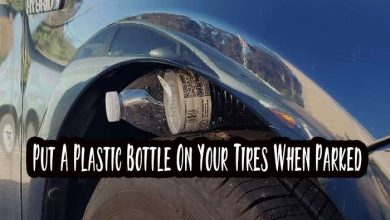Navigating the Rubber Roads: The Truth About Retread Tire Safety
In the labyrinth of tire choices, one often encounters the term “retread tires.” As a seasoned tire enthusiast, I’m here to demystify their safety doubts. Buckle up as we navigate the rubbery roads of tire knowledge!
Yes, retread tires can be safe when done properly by a reputable retreader. Retreading is the process of replacing the worn-out tread on a tire with new tread.
What are Retread Tires?
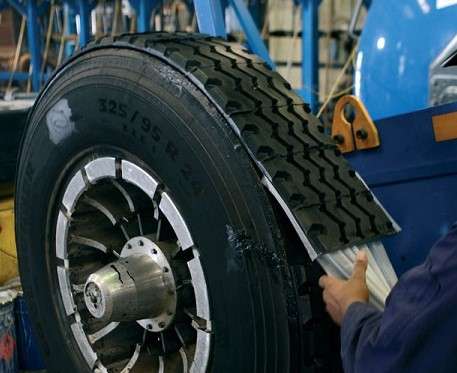
Retread tires are like a phoenix rising from the rubber ashes. They undergo a rejuvenation process that gives them a second lease on life.
The foundation is an existing tire that has seen its share of adventures, but with a little TLC, it gets a fresh tread layer. It’s akin to a tire spa day, where the worn-out treads are buffed away, and a new layer is meticulously applied.
Read More: Can I Put a Spare Tire in the Front?
The Retreading Process
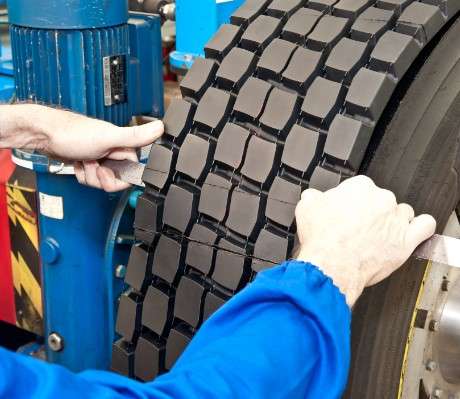
Step 1: Inspection: a thorough inspection is paramount before the makeover begins. Every nook and cranny of the tire is scrutinized, ensuring only the healthiest candidates make it to the next stage.
Step 2: Buffing: Imagine a tire getting a spa treatment – buffing is the exfoliation. The old, worn-out tread is skillfully removed, leaving a smooth canvas ready for a fresh design.
Step 3: Building the Tread: This is where the magic happens. New tread layers are precisely added using cutting-edge technology.
It’s like a tire tailor fashioning a bespoke suit, ensuring the tread pattern aligns with performance needs.
Step 4: Curing: The tire is then baked to perfection. This curing process ensures that the newly applied tread bonds seamlessly with the tire’s structure. The result is a harmonious marriage of old and new.
Step 5: Final Inspection: The rejuvenated tire undergoes one last scrutiny before hitting the road. Quality checks ensure it meets stringent standards, akin to a tire’s final exam before graduation.
Are Retread Tires Safe?
Are Retread Tires Safe Retread tires are generally safe when used properly. They are subject to the same safety standards as new tires and must meet the same performance requirements.
However, some potential risks are associated with retread tires, so it is important to be aware of them before purchasing or using them.
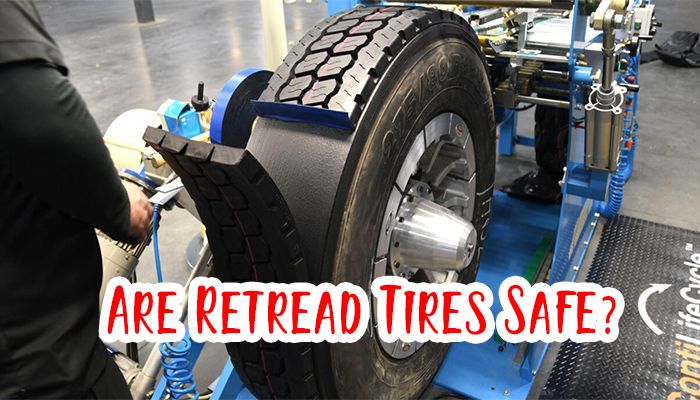
Potential risks of retread tires:
- Quality control: The quality of retread tires can vary depending on the manufacturer and the retreading process. Some retread tires may not be as durable as new tires and may be more prone to defects.
- Age of the tire: The age of the tire carcass is also important. Older carcasses may be more susceptible to damage and failure.
- Improper installation: Retread tires must be installed properly to be safe. If they are installed correctly, they may be more likely to succeed.
Despite these potential risks, retread tires can be a safe and economical option for many drivers. If you are considering retread tires, it is important to research and purchase them from a reputable retreader.
You should also have them installed by a qualified tire technician.
Here are some things to look for when purchasing retread tires:
- DOT number: The DOT number is a unique identifier that can be used to trace the tire to its manufacturer.
- Wear indicator: The wear indicator is a raised bar on the tire that shows when the tread has worn down to an unsafe level.
- Guarantee: The retreader should offer a warranty on their tires.
Here are some additional tips for using retread tires safely:
- Inspect your tires regularly: Check your tires for signs of wear or damage, such as cracks, bulges, or cuts.
- Maintain proper tire pressure: Check your tire pressure regularly and inflate them to the recommended level.
- Avoid overloading your vehicle: Do not exceed the vehicle’s weight capacity.
Read Also: Can I Put Different Brand Tires on My Car?
Real-world Tales and Case Studies
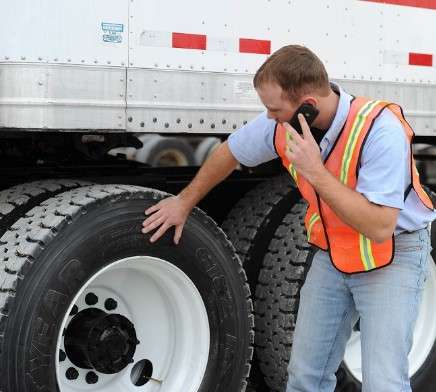
Embark on a journey into the everyday experiences of drivers who have embraced retread tires.
From cross-country adventures to logistical triumphs, these real-life stories paint a vivid picture of the reliability and resilience of retreads.
Case Study: A Road Tripper’s Odyssey Join John, an enthusiastic road tripper, as he narrates the reliability and cost-effectiveness of retread tires.
His tireless travels across diverse terrains with retreads as companions showcase their durability and unwavering performance.
In the Driver’s Seat: Fleet Management Chronicles, Samantha, a logistics professional, shares her insights into managing a fleet of vehicles.
Introducing retread tires slashed operational costs and demonstrated impressive mileage, putting any doubts about their safety and effectiveness to rest.
Environmental Impact of Retread Tires
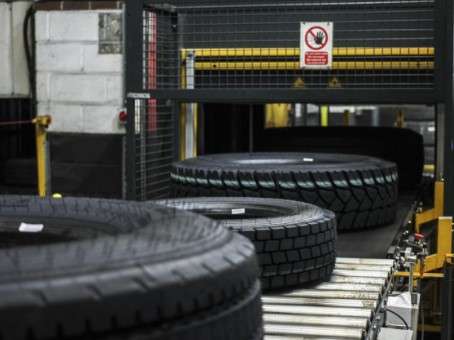
Let’s unravel the eco-friendly saga of retread tires in an era where every tread matters.
These revitalized rubber wonders don’t just roll on roads; they roll towards a greener, more sustainable future.
1. Tire Longevity and Sustainability
Beyond being a cost-effective choice, retread tires emerge as unsung heroes in sustainability.
By extending the lifespan of tires, they significantly reduce the demand for raw materials, marking a crucial step towards a more eco-conscious tire industry.
2. Reduced Carbon Tireprint
Every mile on retread tires is towards a smaller carbon tire print.
With a reduced need for tire production, retreading contributes to lower greenhouse gas emissions, aligning with the global pursuit of a cleaner and greener environment.
3. Tire Recycling Reinvented
Retread tires aren’t just reincarnated; they revolutionize tire recycling. By minimizing the disposal of worn-out tires, they play a pivotal role in reducing the environmental burden of tire waste.
It’s not just about new trends; it’s about treading lightly on the planet. Read my recent post- Can I Mix Air and Nitrogen in My Tires?
Conclusion
As we explore retread tires, let’s encourage a collective tire-talk. Share your experiences, ideas, and projects in the comments below.
Whether you’re a seasoned retread advocate or a tire neophyte, let’s keep the conversation rolling!
Glossary
- Retread Tires: Tires that undergo a rejuvenation process receive a new tread layer to extend their lifespan.
- Curing: The final stage in retreading, where the tire is baked to ensure the seamless bonding of the new tread.
- Industry Standards: Regulations and guidelines set by governing bodies to ensure the quality and safety of retreaded tires.



